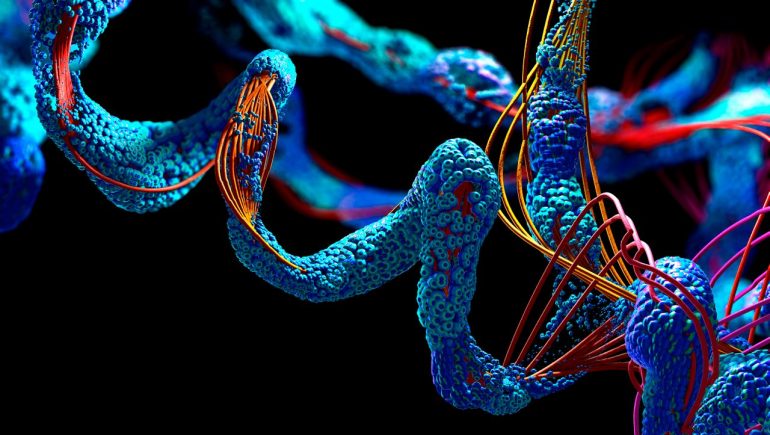Not a single cell in our body can do without them: proteins are essential building blocks of living organisms. Your blueprint is placed in the DNA. Proteins include components of the immune system, such as antibodies, as well as hormones such as insulin or enzymes that break down lactose in the small intestine and make milk compatible.
Exactly how a protein works in the body depends not only on the order of its atoms – but also on its structure: the long chains of amino acids that make up a protein are folded into complex 3D structures. And their decryption is often considered tedious and time-consuming; Here mainly the method of X-ray crystal structure analysis is used.
Late last year, researchers from the British company DeepMind, a subsidiary of Google holding company Alphabet, reported that a new approach had been successful. An artificial intelligence (AI) they developed called AlphaFold can therefore accurately predict the structures of molecules.
Now the team around Katherine Tunyasuvunakul, John Jumper and Demis Hassabis from DeepMind has the method’s application in an expert article I am the magazine “Nature” Presented. The result is a freely accessible database containing many thousands of protein structures. These are to be used for breakthroughs in medical research, but also for plant reproduction – or for the growth of bacteria that can break down plastics in the environment.
The so-called proteome, the so-called proteome, covers almost the entirety of all 20,000 proteins that occur in humans, but with varying levels of accuracy. In addition, there are thousands of other proteins that play a role in other model organisms that are important for research, such as mice, fruit flies and coli bacteria.
Knowing the structure is so important because it can be used to predict how other molecules will bind to proteins—that is, what effect a certain substance will have in practice.
“We believe this to be the most complete and accurate image of the human proteome to date,” says Hasabis, who also heads DeepMind. His company is also of the opinion that “this work represents the most significant contribution artificial intelligence has made to the advancement of scientific knowledge”.
»It will revolutionize our understanding of how life works«, They say Edith Hurd from the European Molecular Biology Laboratory (EMBL) in Heidelberg. “Potential applications are limited only by our imagination.” The database of protein structures will be maintained in EMBL in future. and Gira Bhabha, who studies cell biology at New York University, Appreciation Time left for projects in different areas of research: “Whether you’re studying neuroscience or immunology—whatever your field of biology—it can be useful.”

Web guru. Amateur thinker. Unapologetic problem solver. Zombie expert. Hipster-friendly travel geek. Social mediaholic.





